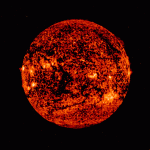Coincidences, coincidences, coincidences. It's all coming together on Sunday for THE astronomical event of the year.
Why is it that we are not further along with 'space travel' despite over 60 years of steady effort? It's very simple! For interstellar travel we have dreams but no technology, while for interplanetary travel we have technology but no dreams!
Jeff Sullivan
Photographer, author, astrophotographer and insomniac. Restless traveler and incurable explorer.
The problem, as with most astronomical phenomena, is the huge timescales in which things happen. We therefore rely on supercomputers to feed them data and get simulations which show us what happens in thousands, hundreds of thousands, millions, or billions of years.
So this brings us to the Blue Moon. What is it and how does it effect us? This occurs when there are two full moons in a single month. There was a full moon July 1 and there will be one on July 31. This calendar occurrence does not happen every year.
Summer is here and all over the world, people take the roads, airways, exploring the world around them. But our travels aren't just limited to terrestrial destinations this year. Exploration, be it of space or thought is one of the great natural human impulses. It can lead us anywhere, often with the help of mathematics.
Dan Rockmore
William H. Neukom '64 Professor of Computational Science, Director of the Neukom Institute for Computational Science, Professor of Mathematics and Computer Science, at Dartmouth College, Santa Fe Institute External Faculty
Scientists at Caltech have confirmed the distance of the furthest galaxy known in the Universe as of today. The light from this very early celestial comes just 570 million years after the Big Bang.
The first impressions you glean from the released New Horizons high-resolution images is that Pluto is vastly different from its dwarf planet cousin Ceres. Ceres lives in the asteroid belt between Mars and Jupiter, and its surface has been pummeled by asteroids, leaving behind thousands of craters from meters to tens of kilometers across.
How can we help often fractured and segregated communities come together? One way is to foster organic interactions through innocuous shared experiences. Public astronomy is one way of giving every type of person a chance to connect and better understand each other.
Viva Dadwal
Visiting Scholar at Johns Hopkins University
Next week on July 14, the NASA spacecraft New Horizons will have completed its nine-year journey to Pluto. There is no telling what we will discover when we get there, but it will certainly be both alien and exciting!
Much to the delight of scientists and technicians, the frigid sky over the snow-covered Siberian fields and villages remained clear as dawn approached.
Mark Boslough
Physicist; Fellow of the Committee for Skeptical Inquiry
The Big Rip, the Big Crunch, the Big Freeze, it pretty much sounds like a list of 'big' Hollywood B-movies. Funny as they may sound, these are some of the most fundamental theories for the beginning and the ending of the Universe.
What are those two bright stars on the West after sunset? They are actually planets, Venus and Jupiter coming into conjunction, in other words, near each other as seen from Earth.
You've probably seen them in the evening: two suspiciously bright lights in the western sky. What are they? Planes? UFOs? No, they're the two brightest planets and they're heading for a dramatic conjunction Tuesday night.
Don't call them planets.This year two unmanned spacecrafts are taking us to worlds we have never seen up close. The Dawn mission has been in orbit around Ceres, the largest asteroid in the solar system since March, and the New Horizons spacecraft will make a close fly-by of Pluto on July 14.
Could it be that no one is out there? Are we now free to declare ourselves the acme of brain power in this part of the cosmos, and certify that everything out to 50 million light-years is Klingon-free?
Continued here:

